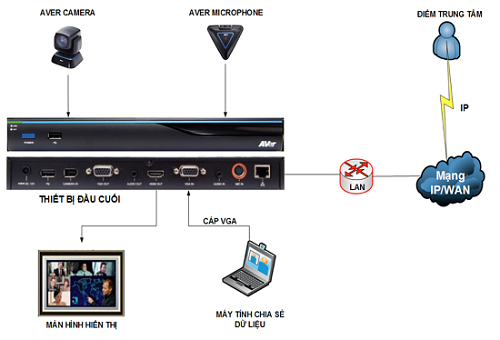Introduction
In today’s interconnected world, video conferencing has become an essential tool for businesses, educational institutions, and individuals alike. At the heart of many video conferencing systems lies a critical component known as the Multipoint Control Units (MCU). This article explores the function, importance, and evolution of MCUs in facilitating seamless communication across multiple locations.
What is a Multipoint Control Units (MCU)?
A Multipoint Control Units is a specialized hardware or software-based device used in video conferencing systems to connect multiple endpoints (participants) into a single conference. The MCU acts as the central hub, managing the audio and video streams from all participants, ensuring that everyone can see and hear each other clearly.
Key Functions of an MCU
- Multipoint Conferencing: The primary function of an MCU is to enable Multipoint Control Units conferencing, where more than two participants can join the same video call. It receives media streams from each endpoint, processes them, and redistributes the combined streams to all participants.
- Media Processing: MCUs perform essential media processing tasks, such as mixing audio streams and transcoding video streams to ensure compatibility between different devices and network conditions.
- Bandwidth Management: Effective bandwidth management is crucial in video conferencing. MCUs optimize the use of available bandwidth by adjusting the quality of video streams based on network conditions, preventing lag and ensuring a smooth experience for all participants.
- Layout Control: MCUs provide layout control options, allowing participants to view multiple video streams simultaneously. This includes features like grid view, active speaker view, and custom layouts to enhance the conferencing experience.
- Protocol Support: MCUs support various communication protocols, such as H.323 and SIP (Session Initiation Protocol), enabling interoperability between different video conferencing systems and devices.
Types of MCUs
MCUs come in different forms, catering to various needs and scales of video conferencing systems:
- Hardware-Based MCUs: Traditional MCUs are hardware-based devices, often installed in dedicated server rooms. They are known for their reliability and performance, making them suitable for large organizations with high conferencing demands.
- Software-Based MCUs: With the rise of cloud computing and virtualization, software-based MCUs have gained popularity. These MCUs run on standard servers or virtual machines, offering flexibility and scalability. They are ideal for organizations looking to leverage existing infrastructure and reduce hardware costs.
- Cloud-Based MCUs: Cloud-based MCUs are hosted by service providers and offer a pay-as-you-go model. This type of MCU is perfect for businesses that require scalability and do not want to invest in dedicated hardware. It also allows for easy integration with other cloud services and platforms.
Advantages of Using an MCU
- Scalability: MCUs enable video conferencing systems to scale from small meetings to large conferences with hundreds of participants, ensuring that everyone can connect seamlessly.
- Interoperability: By supporting various protocols and codecs, MCUs ensure compatibility between different video conferencing systems and devices, making it easier to connect with external partners and clients.
- Enhanced Collaboration: MCUs facilitate advanced collaboration features such as screen sharing, file sharing, and virtual whiteboards, enhancing the overall productivity of video conferences.
- Improved User Experience: By managing audio and video streams efficiently, MCUs ensure that participants experience high-quality video and audio, even under varying network conditions.
Challenges and Future Trends
While MCUs offer numerous benefits, they also come with challenges:
- Cost: Hardware-based MCUs can be expensive to purchase and maintain. However, the shift towards software and cloud-based solutions is helping to reduce costs.
- Complexity: Setting up and managing an MCU requires technical expertise. Organizations need skilled IT personnel to ensure smooth operation and maintenance.
Looking ahead, several trends are shaping the future of MCUs:
- AI and Machine Learning: Integration of AI and machine learning can enhance MCU capabilities, such as automatic speaker recognition, background noise reduction, and intelligent bandwidth management.
- WebRTC: Web Real-Time Communication (WebRTC) is gaining traction as a protocol for real-time communication in web browsers. MCUs that support WebRTC can offer more seamless and accessible video conferencing experiences.
- Integration with Collaboration Platforms: MCUs are increasingly being integrated with comprehensive collaboration platforms like Microsoft Teams, Slack, and Zoom, offering a unified communication and collaboration experience.
Conclusion
Multipoint Control Units are the backbone of modern video conferencing systems, enabling seamless and efficient communication across multiple locations. Whether in the form of hardware, software, or cloud-based solutions, MCUs play a critical role in managing media streams, ensuring compatibility, and enhancing the overall user experience. As technology continues to evolve, MCUs will undoubtedly incorporate advanced features and integrations, further transforming the landscape of video conferencing.







